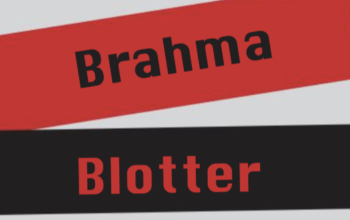The OER initiative is gaining momentum, as the amount of sections providing open educational resources has almost doubled since this past Spring.
This fall there are 41 sections that use free, online materials, otherwise known as open educational resources, whereas in the spring of this year there were only 27 sections available.
Over the years teachers have slowly gravitated to the OER concept and started to implement it in their teaching styles. It isn’t easy for teachers to switch to OER, because they then have to create a new curriculum for the semester based around the new resources.
Not all courses are covered by the OER initiative, mainly because it is hard for some professors to have their concepts translated into a online format, because of material that you can only get by purchasing a certain textbook.
“It’s not that easy for instructors to make the switch over to a free textbook because they have to see how to implement it,” said Clay Gediman, librarian to Pierce College. “Usually Canvas works best but sometimes they need to get extra resources, because maybe the textbook didn’t cover what the old textbook covered.”
Nevertheless, professors are opening up to the long term benefits of the OER system. Professors can pull material from multiple sources, making it easier to cover all the main learning points that they feel apply to the course.
Students can find out which courses are OER compatible when they use the search engine during the enrollment process. Under the Academics Menu bar, there is subtab named Find My Courses, under which is the Search Classes link.
Professor Melissa Gulick expressed how she uses OER as a way to relieve her students from one of the many financial burdens that college students face.
“Students are struggling to make ends meet, and I don’t want to give them the additional burden of paying hundreds of dollars for textbooks that they may not use again,” said Gulick. “I would rather save them that money and post the readings for free so that they can save their money for when they go to university.”
After students make it to the Search Classes page, they should look for the Class Search Type. When highlighted they can narrow down the search by selecting the Zero Cost Textbook Classes (OER).
This making it easier for students to actually lock in the classes that they need instead of going on a wild goose chase in the Microsoft Word document of classes available.
Gediman mentioned that professors were a little concerned that students would only take classes based on the free textbooks, but there hasn’t been any declines in the regular classes enrollments.
“Most students are focused on the instructor and how well they teach the class rather than what is free,” said Gediman. “Then maybe if it comes down to one or two classes that you don’t really have the money for textbooks, you can pick a few OER courses.”
Regardless the OER initiative plans to continue to add more courses that students can pick from. At the end of the day it is going to come down to what students are more comfortable using.
“You can access your book pretty easily, so I think that students like it,” said Denise Robb, Political Science professor. “Even though it is free, I haven’t seen students jump to it so hopefully more find out about how easy it truly is.”




